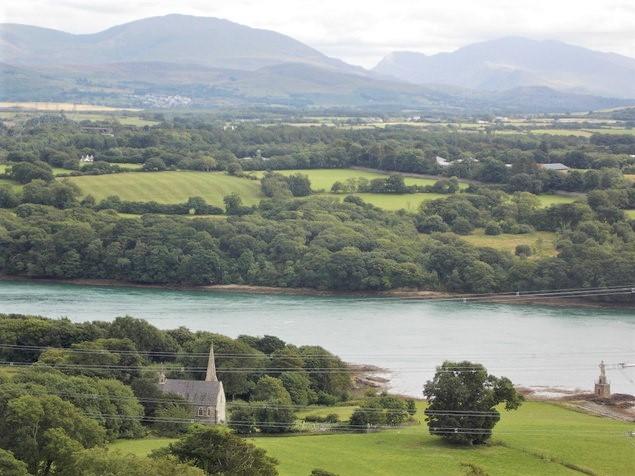St Tysilio
Church Island, Anglesey
It is known that the present church on the island dates back to the 1400s but it is not known who built the church and why.

St Mary’s church by the white hazel pool, near the fierce whirlpool with the church of Saint Tysilio by the red cave.
Llanfairpwllgwyngyll, Anglesey
The Victorian church here replaced a medieval building on this ancient Christian site. The circular boundary suggests that the churchyard dates from the era of the Celtic saints, who travelled mainly by boat from the 5th century onwards to preach the new gospel of Christianity.
Church records from 1254 describe the local settlement as Piwllgunyl. This is a corruption of Pwllgwyngyll, which means 'Pool of the White Hazel' and refers to trees which stood here. The pwll could have been a whirlpool in the nearby Menai Strait or a depression in the landform.
The church’s dedication to St Mary came later, possibly through Norman influence. In the 16th century and later, the village was known as Llanfair Pwllgwyngyll (often abbreviated to Llanfairpwll). Llanfair means the walled enclosure or church (llan) of Mary. The name’s extension to form Europe’s longest place name is a product of the Victorian era, when the community’s focalpoint moved from the shore to the area around the new railway station.
Only 11 of Anglesey’s churches were dedicated to St Mary, a relatively low proportion. Dedications to Celtic saints are the norm on the island. Local historian Gerwyn James notes that almost all of Anglesey’s churches dedicated to the Virgin Mary were by the coast, and suggests a possible connection with the belief that Mary 'Star of the Sea' protected mariners and fishermen.
The church which stood here from the early medieval period featured at its eastern end a semi-circular apse, a highly unusual feature for a church (as opposed to a cathedral). It was demolished to make way for the new church which was completed in 1853, three years after the opening of the nearby Britannia Bridge. Many people died in the bridge’s construction, as detailed on our page about the bridge builders’ memorial which stands in the churchyard.
Local landowner and Battle of Waterloo veteran Henry William Paget, First Marquess of Anglesey, died in 1854, soon after the new church opened. The church’s east window, dating from 1876, is dedicated to his memory.
Church Island, Anglesey
It is known that the present church on the island dates back to the 1400s but it is not known who built the church and why.
Llandegfan, Anglesey
A church at Llandegfan was recorded in 1254, probably where St Tegfan had established a cell in the 6th century.
Bangor, Gwynedd
For nearly 1,500 years Bangor Cathedral has been a 'house of God' a peaceful sanctuary where the long history of prayer and pilgrimage can still be felt.